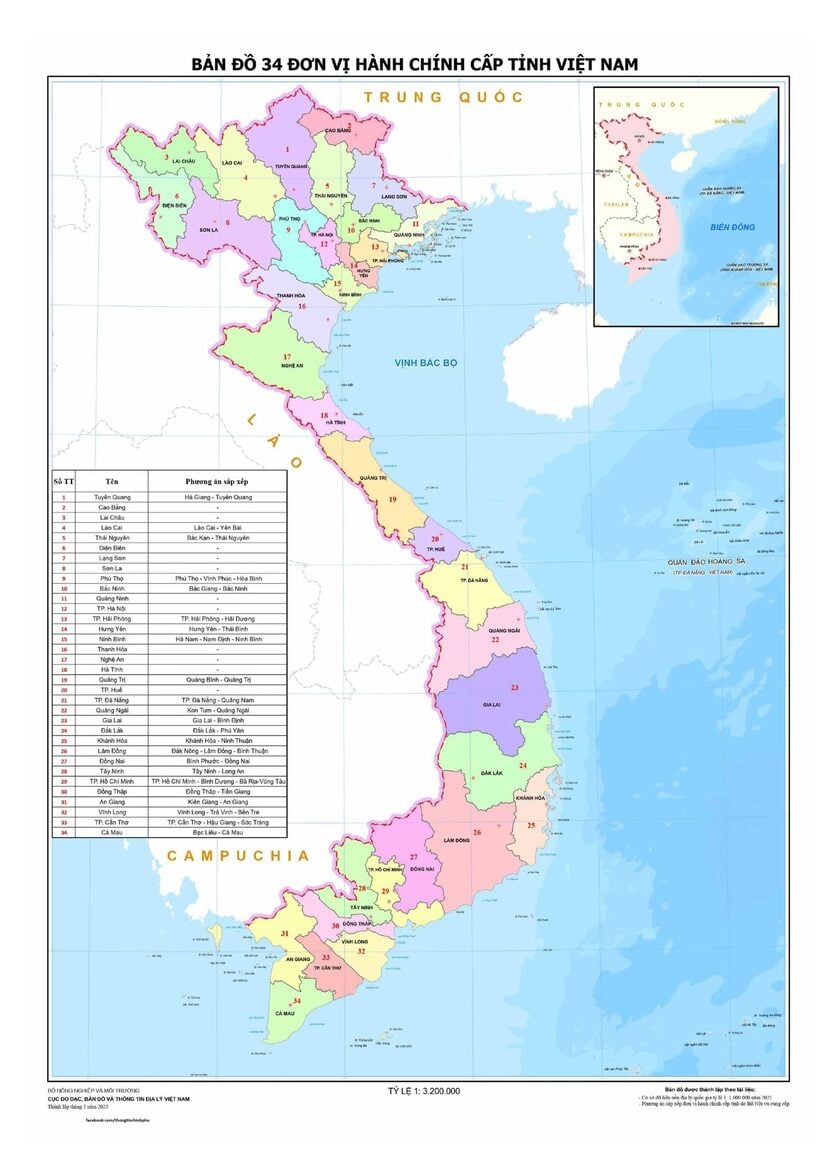On June 12, an important milestone in Vietnam's administrative reform was officially established when the National Assembly's Resolution on the arrangement and merger of provinces and cities officially took effect immediately after receiving consensus and approval from the National Assembly. This is a historic step, opening a new phase in streamlining the apparatus and improving the efficiency of state management.
After the resolution takes effect on June 12, the country will have 34 administrative units, including 6 centrally-run cities and 28 provinces.
Notably, there are 11 provincial administrative units that have not been reorganized. Of these, 10 units meet the required standards, namely Hanoi, Hue, Lai Chau, Dien Bien, Son La, Lang Son, Quang Ninh, Thanh Hoa, Nghe An, and Ha Tinh. Notably, Cao Bang province is a provincial administrative unit that has not met the standards but has special factors, so it is not subject to merger.

Map of Vietnam after the Resolution on the arrangement of provincial-level administrative units in 2025 was passed.

The policy of administrative reform and streamlining the state apparatus poses an important and urgent requirement to merge the provincial level and abolish the district level, aiming for effective governance, reducing costs and promoting sustainable development.
Meanwhile, 52 provinces and cities implementing the arrangement will merge into 23 new provincial-level administrative units with specific names such as: Tuyen Quang, Lao Cai, Thai Nguyen, Phu Tho, Bac Ninh, Hung Yen, Hai Phong, Ninh Binh, Quang Tri, Da Nang, Quang Ngai, Gia Lai, Khanh Hoa, Lam Dong, Dak Lak, Ho Chi Minh City, Dong Nai, Tay Ninh, Can Tho, Vinh Long, Dong Thap, Ca Mau, An Giang.
The resolution on merging provinces and cities in 2025 also stated that relevant agencies need to urgently carry out necessary preparations to ensure that local governments in newly established provinces and cities will officially come into operation from July 1. During the transition period, local governments in provinces and cities before the arrangement will continue to operate until local governments in new administrative units are formed and officially put into operation.

Streamlining the organization is an inevitable trend towards sustainable development. Every change, although it may create initial difficulties, is aimed at improving operational efficiency.
To ensure a smooth transition, the resolution requires the Government, People's Councils and People's Committees of provinces and cities to carry out the arrangement and merger to focus on perfecting the organizational structure of local agencies and organizations. Particularly important is the support and timely resolution of difficulties and problems of cadres, civil servants, public employees and workers affected by this arrangement.
The Government, ministries and central agencies are also assigned the responsibility of guiding and promptly handling issues arising in the process of reorganizing provincial-level administrative units, and at the same time perfecting the organization of local government apparatus at all levels to effectively implement the new two-level local government model. All these efforts are aimed at the ultimate goal of building a modern, streamlined administration that better serves the country's development in the coming period.



































